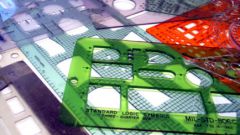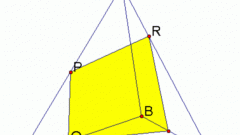Instruction
1
The conditions of the problem when finding the diagonal axial section of the cylinder may be different. Carefully read the text of a task, select the known data.
2
The base radius and height of a cylinderIf your problem is known to such factors as the radius of the cylinder and its height, then based on this, find the diagonal. Since the axial section is a rectangle with sides that equal the height of the cylinder and the diameter at the base, then diagonal sections - is the hypotenuse of right triangles forming the axial section. The legs in this case are the base radius and height of the cylinder. By the Pythagorean theorem (c2 = a2 + b2) find the diagonal axis of the cross section:D = √〖(4R〗^2+H^2) where D is the diagonal axial section of the cylinder, R is the base radius, H – height of the cylinder.
3
The base diameter and the height of the cylinderIf the task of the diameter and height of cylinder are equal, then in front of you is an axial section in the form of a square, the only difference of this condition from the previous in that you will need to split into 2 base diameter. Continue to act in accordance with the Pythagorean theorem, as in the previous problem.
4
The height and the surface area of a cylinderRead carefully the conditions of the problem, with a known height and area must be the hidden data, for example, the caveat that the height is greater than the base radius 8 cm In this case, find the radius of this square, then use the radius calculate height, then the Pythagorean theorem – the diameter of the axial section:Sp = 2πRH+2nr^2 , where Sp is the surface area of the cylinder.Print out the formula for finding the height using the surface area of a cylinder, remember that the condition H = 8R.H = (Sp - 2nr^2) / 2nr.
Useful advice
Depicting a drawing on paper, try to use as much of the sheet size for the image cylinder. Than stronger and bigger the drawing, the will be presented the solution to the problem.




